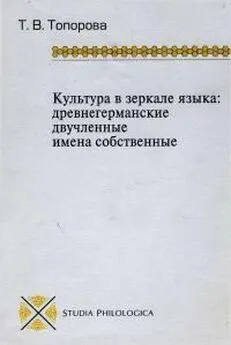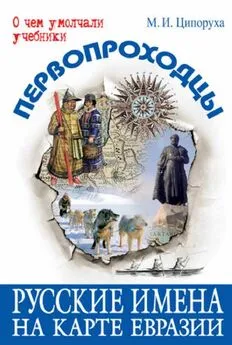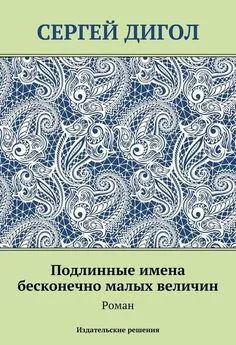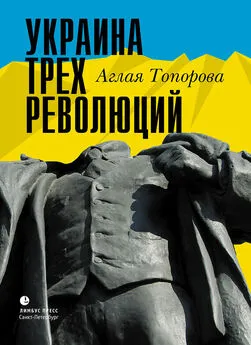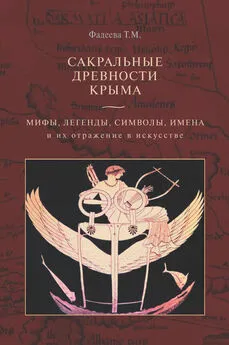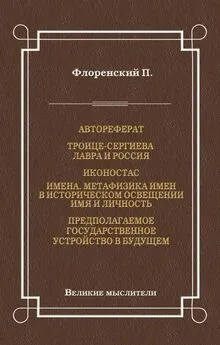Татьяна Топорова - Древнегерманские двучленные имена
- Название:Древнегерманские двучленные имена
- Автор:
- Жанр:
- Издательство:Языки русской культуры
- Год:1996
- ISBN:нет данных
- Рейтинг:
- Избранное:Добавить в избранное
-
Отзывы:
-
Ваша оценка:
Татьяна Топорова - Древнегерманские двучленные имена краткое содержание
Древнегерманские двучленные имена - читать онлайн бесплатно полную версию (весь текст целиком)
Интервал:
Закладка:
1966.
Рокоту J. Indogermanisches etymologisches Worterbuch (IEW), Bern, 1959, Bd., 1-2.
Pulgram E. Indo-European personal names. - Language, 1947, Vol. 23, Nr.3, 189-206.
Scherer A. Die keltisch-germanischen Namengleichungen. -In: Corolla Linguistica, Festschr. F. Sommer. Wiesbaden, 1955.
Schlaug W. Studien zu den altsachsischen Per sonennamen des 11 und 12. Jahrhunderts. - Lunder Germanische Forschungen, 1955. Bd. 30.
Schmidt K.H. Die Komposition in gallischen Per sonennamen. Tubingen, 1957.
Schonfeld M. Worterbuch der altgermanischen Personen-und Volkernamen. Heidelberg, 1911.
Schramm G. Namenschatz und Dichtersprache. Gottingen, 1957.
Schroder E. Deutsche Namenkunde. Stuttgart, 1941.
SchwarzE. Deutsche Namenkunde. - In: Deutsche Namenforschung. Gottingen, 1949, Bd.l.
Searle W.G. Onomasticon Anglo-Saxonicum. Cambridge,
1897.
Seebold E. Die Stammbildungen der idg.*ueid- -Sprache, 1973, Bd.19, 20-38, 158-179.
Solmsen F. Indogermanische Eigennamen als Spiegel der Kulturgeschichte. Heidelberg, 1922.
Старшая Эдда. Древнеисландские песни о богах и героях. Перевод А.И. Корсуна. Редакция, вступительная статья и комментарии М.И. Стеблин-Каменского. Изд. АН СССР,
М., Л., 1963.
Стеблин-Каменский МЛ. Древнеисландская топономастика как материал к истории имени собственного. - Скандинавский сборник, Таллин, 1961.
Strom Н. Old English personal names in Bede ’s History: An Etymological-phonological investigation. Lund, 1939.
Sturtevant A. Comments on mythical namegiving in Old Norse. - Germanic Review, 1954, vol. 29, 68-71.
Топоров ВЛ. Об одном способе сохранения традиции во времени: имя собственное в мифопоэтическом аспекте. В кн.: Проблемы славянской этнографии. Л., 1979, 141-149.
Топоров ВЛ. Имена - Мифы народов мира. М., 1980, т.1, 510.
Trautmann R. Die altpreussischen Personennamen. Ein Beitrag zur baltischen Philologie. Gottingen, 1925.
Тройский И. Проблемы языка в античной науке. - В кн.: Античные теории языка и стиля. М.-Л., 1936, 7-30.
Тупиков НМ. Словарь древнерусских личных собственных имен.- Записки Отделения русской и славянской археологии императорского русского археологического об щества. С.-П., 1903, T.VI, 58-913.
Vries J. de. Altgermanische Religionsgeschichte. Brl. 1956-1957, Bd. 1-2.
Vries J. de. Altnordisches etymologisches Worterbuch. Leiden, 1977.
Wackernagel W. Sprache und Sprachdenkmaler der Burgunden.- Abhandlungen zur Sprachkunde. Lpz., 1874.
Werle G. Die altesten germanischen Personennamen. -Beiheft zum 12. Bd. der Zschr. fur deut. Wortforschung. Strassburg, 1970.
Wes sen E. Nordiska namnstudier. - Uppsala universitatets Arsskr., 1927, Nr. 3.
Wrede F. Die Sprache der Ostgoten in Italien. - Quellen und Forschungen zur Sprach- und Culturgeschichte der germanischen Volker, 1896, Bd. 68.
Summary
Culture in the Mirror of Language:
the Old Germanic compound proper names
The monography deals with the investigation of the Old Germanic onomastic compounds, forming the intermediate sphere, where the interaction of linguistic and extralinguistic factors is the most intensive. The interpretation of the proper names as “the mirror of culture” and their functioning as specific cultural and linguistic indices reflecting the most prestige concepts of the mythopoeic model of the universe create favourable conditions for a complete research of language and culture.
The selection of the onomastic compounds as an object of the analysis is determined first of all by the fact that they are better preserved than simple proper names (because they were associated with a certain social stratum and designated the representatives of the higher level of the social hierarchy), and secondly, because names of this structure reflected in various Indo-European languages a typologically similar periods in the history of culture, the characteristic attributes of which were the troop with the chief at the head, certain types of armament and means of conveyance (chariots) and glory as the greatest value of the model of the universe.
The main aim of the monography consists in an exaustive description of the Old Germanic onomastic compounds, their dialectal differentiation, i.e. their stratification into the Common Germanic and various areas (i.e. East Germanic, West Germanic and North Germanic), the study of their mythopoeic status, syntactic combination of the elements constituting the onomastic compounds, their morphology, semantics, poetics, the analysis of the most archaic proper names fixed in the Older Runic inscriptions and the epic onomastics represented in the Older Edda, the comparison of the Old Germanic onomastic compounds with the proper names going back to the same I.-E. root in other languages (Indo-Aryan, Greek, Celtic, Baltic, Slavic, Thracian and Illyric).
Such an approach determines the structure of the monography including 11 chapters and conclusions: Ch. 1: The proper name in the mythopoeic tradition; ch. 2: The Common Germanic onomastic compounds; ch. 3: The East
Germanic and West Germanic proper names; ch. 4: The North Germanic and West Germanic proper names; ch. 5: The onomastic compounds in the Older Runic inscriptions; ch. 6: The Old Germanic epical onomastics (on the material of the Older Edda); ch. 7: The combination of the elements in the Old Germanic onomastic compounds; ch. 8: The morphology of the Old Germanic onomastic compounds; ch. 9: The semantics of the Old Germanic onomastic compounds; ch. 10: The poetic organization of the Old Germanic onomastic compounds; ch. 11: The Indo-European correlations to the Old Germanic onomastic compounds.
1. The mythopoeic status of the proper name. The proper name in the modern society is regarded as a member of the classified system of nomination. Its function is that of designation, which realizes in two aspects: it distinguishes an individual from the collective, and it integrates the bearers of the same name to the common group. In contradistinction to an appellative, a proper name has no connotations, it is unable to express any characteristics of the object, it has no sence in itself without appeal to its denotatum, and we are dealing with a situation ‘code referring to code’ in the terminology of R.O. Jacobson. In the mythopoeic tradition the situation is quite different. According to the theory of needs (B. Malinowski) all the elements constituting the culture of an archaic tribe (from the name to the myth) appear as an answer provoked by an urgent request. Proceeding from this conception, the proper name is treated not as a label, but as a symbol reflecting the essence of the individual. The identification of the name and the nature of the individual realizes in the creative function of nomination, postulating primacy of the name determining the destiny of the individual with respect to its bearers,' the pluralism of the names, connected not only with an attempt to reflect the various aspects of the denotatum, but also with the metaphoric basis of nomination, and in the mobile borders between the proper name and the appellative.
2. The combination of the elements of the onomastic compounds presupposes an analysis of their valency - the ability to join components to the right and to the left. In this chapter is a description of the elements represented only in the first position of the onomastic compound, only in the second one and those that are met both in the first and in the second position, as well as an investigation of the mechanism of combining the elements within a compound. One can take for specific features of the syntactic combination of the elements in the onomastic compounds 1) the selection of the elements participating in the formation of names (e. g. the impossibility of tautological compounds, the use of the adverbs and prepositions only in the first place, the preposition of the substantive to the verb under the influence of the dominating syntactic type SOV); 2) the original differentiation of the masculina and feminine registered in the male and female names; 3) the restiction in the set of the second elements, which are the kernel of the onomastic compounds distributed among the three lexical groups, designating the appurtenance to a certain class (e. g. *gastiz ‘a guest’, *mannz ‘a man’, *pegwaz ‘a servant’, *weniz ‘a friend’), their verbal equivalents (*waldaz ‘ruling’, *warjaz ‘protecting’) and to the attributes of the heroic model of the universe ( *rlkaz ‘mighty’, *meriz ‘famous’, *harduz ‘firm’), as well as a considerable prevalence (more than twice) of the first elements (160), modifying the semantics of the second ones (67); 4) the heterogency of the onomastic space including the central and the marginal zones.
3) The morphology of the onomastic compounds. There are 4 models of these compounds: coordinative with equal components, determinative with the government and dependence of one component from the other, possessive ones and those with the first component (mainly a preposition) governing the second one. The main distinction of the Old Germanic proper names from the appellatives consists in the representation of several models which are absent among the appellatives (e. g. ‘the ordinal & adjective’ - *Fruma-rIkaz ‘the first, the mighty one’), and in the disproportion between them (e. g. the scarcity of the bahuvrihi among the appellatives and its great frequency among the proper names, the productivity of the coordinative onomastic compounds).
4) The following peculiarities are characteristic of the semantics of the proper names: 1) the appearence of the additional semantic relations between the components of the name (e. g. *Austra-gautaz, literally ‘an East-Gaut’, i. e. ‘a Gaut of / from / in the East’); 2) the functioning of the secondary names in which the logical relations between the components of the compound are violated from the view-point of the rules of the onomastic tradition, especially owing to the necessity to combine in the name of a child one component from the father’s and another from the mother’s name (they do not always fit together) 3) the existence of the most favourable spheres, e. g. the military one; 4) the idealization, the prevalence of the positive attributes in comparison with the neutral or negative «ones; 5) the influence of the heroic model of the universe on Uhe constitution of the onomastic system (e. g. the five designations of the war - *badu>o-, *gunpjo*hadu-, *heldjo-, *welgaz and a great number of synonyms (e. g. ‘a spear’ - *gaiza-, *uzda-, ‘a sword’ - *heru-, *branda-)); 6) the penetration of the mythological motives into the semantics of the onomastic compounds (e. g. *Ansu-geislaz refers to a myth about the war between the two classes of Scandinavian gods - the Ases and the Vanes and to an exchange of the hostages); 7) the static, “substantive” character of the Old Germanic onomastic system, manifested in the scarcity of the verbs, symbolizing the dynamic aspect).
Читать дальшеИнтервал:
Закладка:
